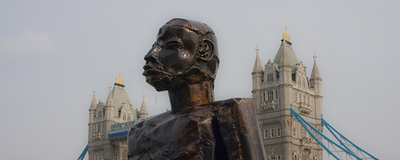Jan 25, 2012 3
Virtually rational?

One of the most fascinating angles to emerge from the LA Fitness story is the differing perceptions people have of the value of goods and services.
Specifically, much of the public support for the contract holder undergoing hardship seems to be built on the premise that “they haven’t used the service yet; why shouldn’t they be able to walk away without penalty?”
It’s an interesting point. If they’d stopped making repayments for a car, there is a clear link to a tangible asset that they’d have to give back. Similarly with a mortgage and a property.
If you stop a handset-included mobile phone contract early, you can argue that you’re not consuming any more services, but you have of course got the benefit of the handset in your hand (the costs of which have been met by some of the projected revenue take over the life of your contract).
And what about a loan? The recipient has had the benefit: the lump of cash up front–would a massive interest burden in some way justify their cessation of repayment? It gets harder in this case, maybe because the defensible “asset” becomes less tangible?
And the point which I think was largely glossed over with LA Fitness was that although the customer might not be consuming any more of the service (which in any case seems to be common with many gym memberships) this forms part of an overall price/usage/investment/repayment model on which the business is founded.
If contract providers face a greater risk of early termination without penalty then they will adjust their model by raising prices to account for that greater risk. We know that 24 month contracts are cheaper than 12 month ones: it’s not as if we can really make an assumption of consumer naivety on that general principle any more.
And the “projected value of the contract” is just as real as a physical asset in other ways: for example to the sales rep whose commission is pegged to ongoing “good” business. Try telling them that early termination without penalty is an action without effect.
Similarly, to accountants and investors, a stream of known future revenue is as real an asset as a car in a showroom. That’s how businesses work.
None of which means that discretion can’t and shouldn’t have been exercised in this case. The company’s initial refusal to recognise the impact that their blunt decision would have (perhaps magnified by the “not a real consumer service” points above) was foolish, and eventually they had no choice but to cave in.
They would have had all sorts of discretionary powers: in case of contract holder death or disappearance, for example, and should have used them.
But I am left with the question: would we be as consistent with support for a hardship case where other services (or even goods) were involved? And is this rational?
Or was a collective folk-feeling of frustration–with all those thousands of gym memberships that are paid for and never used–in some way acting as an accelerant for this fire?
